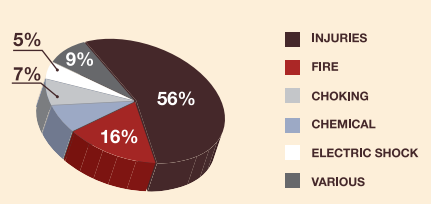 Most importers in Europe and in the US under-estimate the risks they are running, when it comes to compliance to safety standards.
Most importers in Europe and in the US under-estimate the risks they are running, when it comes to compliance to safety standards.
It seems like, in many product categories, the European Union is setting the trends and the United States then follow up with their own safety regulations. So let’s focus on Europe in this article.
According to RAPEX (the EU “rapid alert system” for non-food products), the number of measures taken against dangerous products has risen 26% in 2012.
What is the driver of this increase? “The improved enforcement work carried out by the authorities in EU countries”.
According to their report, here are the main types of risks at the root of these “measures”:
When does an importer get fined (or forced to launch a recall) for safety reasons?
Currently, importers are at legal risk when the products they put on their market are not compliant to applicable regulations (EN71 for toys, REACH, and so on).
But a new regulation will be adopted soon (probably in 2015), and this will change.
Importers will be fined if documents that prove compliance are missing or not in order!
What is a document that proves compliance?
- Certificates that suppliers give before production starts? NO.
- Laboratory testing results on production samples? YES.
- Even if this testing was performed in the supplier’s premises by the buyer or his appointed representative? Or in the buyer’s premises? Or an external lab that is not accredited? YES.
(Authorities don’t care where the testing is done, except when it comes to a few categories such as medical products.)
How European importers can become aware of applicable safety regulations
1. Internal specialists
Large companies usually manage this internally with a few specialists, but it gets very difficult if they purchase many different product categories.
2. Third-party testing houses
The large testing laboratories can also provide this information to importers. Unfortunately, even the big names are not 100% reliable at this game.
They are good only for straightforward cases. For example, if a product is subject to the safety standards of toys AND packaging, the non-technical salesperson might transmit the inquiry only to a toy specialist… and not notice the packaging function of that product.
3. Online databases
I recently discovered ProductIP, which collects regulations from the 27 EU countries (each country has its own requirements and/or tolerances).
Users get access to this database, see what the requirements are for any non-food product, and can tell their suppliers about it.
They have even developed an app that can be used on a trade show, so the purchaser can tell his testing requirements to the supplier on the spot.
—
So, how do you manage your safety compliance risks?

